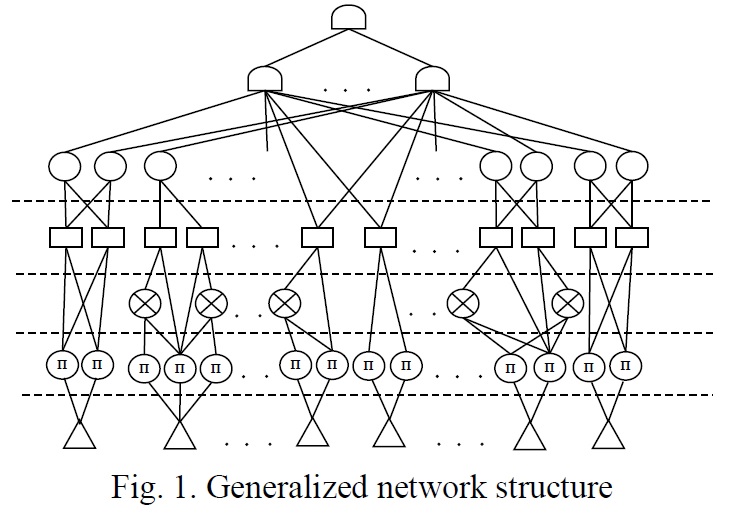Indistinct structure of targets to formalize the tasks of dynamic objects management
Abstract
To solve the problems of managing dynamic objects, the generalized structure of target installations has found wide application, which is a kind of heterogeneous functional network. At the same time, the formalization apparatus allows to describe the structure of the target model itself, to establish the truth of the relationship between the goals for each aspect of knowledge, to control the process of achieving the targets and the replenishment of knowledge. However, the existing means of formalizing logical-analytical activities of decision-makers are based on classical logic, which dramatically reduces the quality of decisions taken in conditions of uncertainty. The existing contradiction between the complexity of decision-making processes for managing dynamic objects and the imperfection of the formalization apparatus for solving these problems under uncertainty conditions necessitates the refinement of the means of formalization and forms the purpose of the article. The authors consider an approach to supplement the target structure with elements of fuzzy sets. The proposed formalization apparatus, called the fuzzy structure of target settings, significantly expands the descriptive capabilities, allows for initial conditions and manipulating knowledge in a wide range to obtain a solution for controlling a dynamic object, characterized by sharing the generalized structure of targets and the apparatus of fuzzy sets. The combination of these two approaches allowed, within the framework of a single formalism, to carry out the designation of the initial conditions not by rigid boundary values 0 and 1, but by any number from the range [0, 1], thus achieving a more accurate description of the properties of the modeled domain. At the same time, the rejection of the vertices of the search, algorithmic, and comparison makes it possible to significantly simplify the structure of the targets and the computational procedure on it. The description of the subject area obtained in the article due to the proposed formalization apparatus will allow, as a result of logical inference, to calculate the value of the membership function at any level of the target structure hierarchy, which will make it possible to more accurately relate the achieved and planned situations and, accordingly, make more informed decisions on managing dynamic objects.
Downloads
References
Yaroshek, V.E. (1987). Theoretical bases of automation of decision-making processes in the Air Defense Forces. Kharkov. VIRTA PVO. 324 p. [in Russian]
Glushko, V.M. (1976). About forecasting based on expert information. Science Research. Prediction Computer science. Kiev. “Naukova Dumka”. P. 35-44. [in Russian]
Yaroshek, V.E., Kozlov, S.A. (1989). Model of the task of managing organizational systems based on the principles of reflection. Artificial Intelligence in Systems of Management. Scientific-methodical materials. Part 1. Kharkiv. VIRTA PVO. P. 194-213. [in Russian]
Aleksandrov, O. V., Dvukhhlavov, D.Ye., Pavlenko, M.A. etc. (2009). Theoretical foundations of automatization of processes in the process of controlling the Air Forces: Navch. Posib. Kharkiv HUPS.176 p. [in Ukrainian]
Artificial Intelligence: A Handbook. In 3 books.(1990) Prince 2. Models and methods. / Ed. D.A. Pospelov. Moscow. “Radio and communication”. 303 p. [in Russian]
Ansoff, I. (1989). Strategic Management. Trans. from English. Moscow. Economy. 519 p. [in Russian]
Glushko, V.P. (1987). Making decisions. Kiev. “Naukova Dumka”. 168 p. [in Russian]
Gerasimov, B.M., Tarasov, V.A., Tokarev, I.A. (1993) Man-machine decision-making systems with elements of artificial intelligence. Kiev. “Naukova Dumka”.184 p. [in Russian]
Pospelov, G.S., Ven, V.L., Solodov, V.M. etc. Edited by G.S. Pospelov (1981). Problems of program-oriented planning and management. Moscow. “Science”.461 p. [in Russian]
Questions of cybernetics. Modeling of man-machine cybernetic systems. (1984) Academy of Sciences of the USSR, scientific council on complex problems “Cybernetics”. Issue 110. Moscow. Scientific Council on the complex problems of “Cybernetics” of the Academy of Sciences of the USSR. 146 p. [in Russian]
Yaroshek, V.E., Kozlov, S.A. (1988). The method of constructing a network model of the task of managing organizational systems. Automated control systems and automation devices. Issue 86. Kharkiv. Vyshcha shkola. P. 18-22. [in Russian]
Gerasimov, B.M., Grabovsky, G.G., Ryumshin, N.A. (2002). Fuzzy sets in the problems of designing, managing and processing information. Kiev. “Tehnіka”.140 p. [in Russian]

Abstract views: 534 PDF Downloads: 324
Copyright (c) 2019 Olexandr Tуmochko, Maxim Pavlenko, Olexandr Timochko, Maksym Tyshchenko, Pavlo Openʹko

This work is licensed under a Creative Commons Attribution 4.0 International License.
The authors agree with the following conditions:
1. Authors retain copyright and grant the journal right of first publication (Download agreement) with the work simultaneously licensed under a Creative Commons Attribution License that allows others to share the work with an acknowledgment of the work's authorship and initial publication in this journal.
2. Authors have the right to complete individual additional agreements for the non-exclusive spreading of the journal’s published version of the work (for example, to post work in the electronic repository of the institution or to publish it as part of a monograph), with the reference to the first publication of the work in this journal.
3. Journal’s politics allows and encourages the placement on the Internet (for example, in the repositories of institutions, personal websites, SSRN, ResearchGate, MPRA, SSOAR, etc.) manuscript of the work by the authors, before and during the process of viewing it by this journal, because it can lead to a productive research discussion and positively affect the efficiency and dynamics of citing the published work (see The Effect of Open Access).















